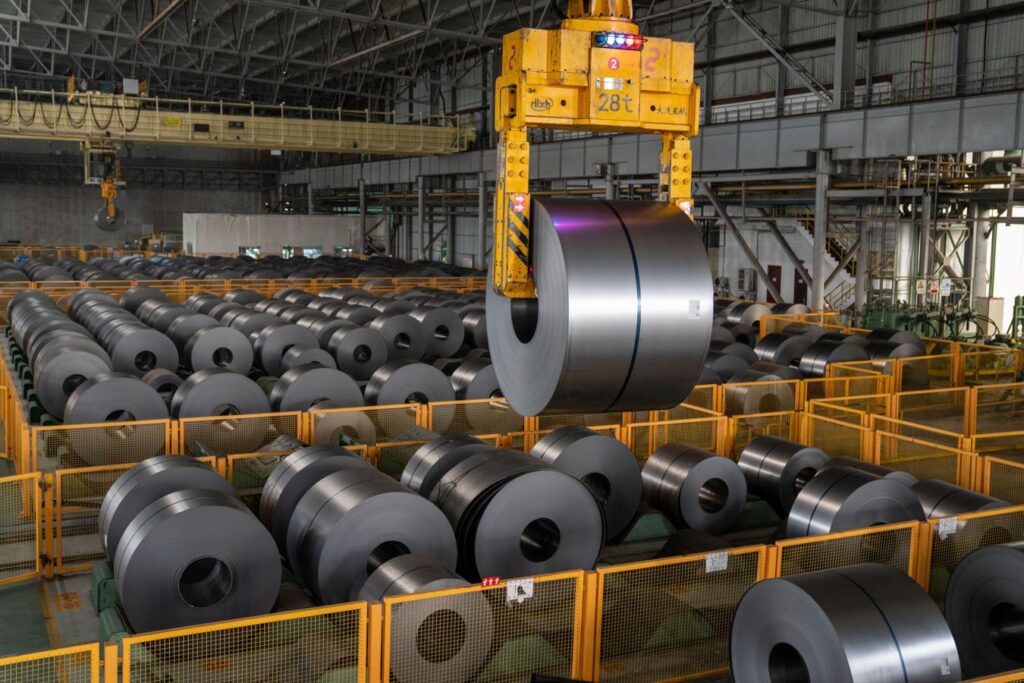Not all commodities have been falling steeply under the weight of rising tariffs with iron ore riding out the storm.
The major profit generator for five of the world’s biggest mining companies, BHP, Rio Tinto, Fortescue, Vale and Anglo American, iron ore has eased back by around 5% from $103 a ton to $98/t a ton over the past week, a fraction of the 15% fall by copper and oil.
steel coils at a factory in Hefei, China. (Photo by Costfoto/NurPhoto via Getty Images)
Iron ore could fall further, but a floor price of $80/t is likely to underwrite the profits of the world’s biggest miners, which might mean that they will reclaim some of their recent share price falls.
BHP and Fortescue, which both saw their share prices drop by close to 10% at the height of the tariff storm, have reclaimed about 2% of their losses.
Steeper falls could come if the U.S. v China trade war continues to worsen with China possibly forced to cut production in its giant steel sector, which would put pressure on the two major iron ore exporting countries, Australia and Brazil.
But not everyone sees an inevitable iron ore price correction with a senior BHP executive telling Australian media yesterday that he was confident that there would not be a sharp fall.
Steady Steel Output
Rag Udd, BHP’s chief commercial officer told the Australian Financial Review newspaper that Chinese steel makers would maintain current production rates for several more years which should ensure an iron ore price of more than $80/t.
That forecast from Udd was made before the latest salvo of tariff threats from U.S. President Donald Trump who said earlier today he would hit China with an additional 50% tariff unless China withdrew its 34% tariff on U.S. exports.
The fast flow of tit-for-tat tariffs has made it difficult for investors to know exactly what tariffs are being applied, or when, adding to the growing unease about the effects of a growth stunting trade war.
Electric vehicles are a fast-growing market for Chinese steel. (Photo by STR/AFP via Getty Images)
Udd’s view is that China will be able to maintain steel production close to a billion tons a year because a decline in demand from the Chinese property sector was being replaced by demand from other industries such as machinery and electric car production.
He said the focus on steel demand from the property sector was masking rapid growth in other industries with examples such as steel use in machinery production growing from single digits annually to 30% of total steel demand.
“So, you have got a country that’s actually running at a billion tons of steel production a year, and has been consistently for the last six years, and I can see a pathway for that continuing in the next few years,” Udd said.
“That is not based on any one sector but based more on the resilience and adaptability and how fast China moves when it pivots to new industries and opportunities. The Chinese market is much more resilient an agile than people recognize.”


